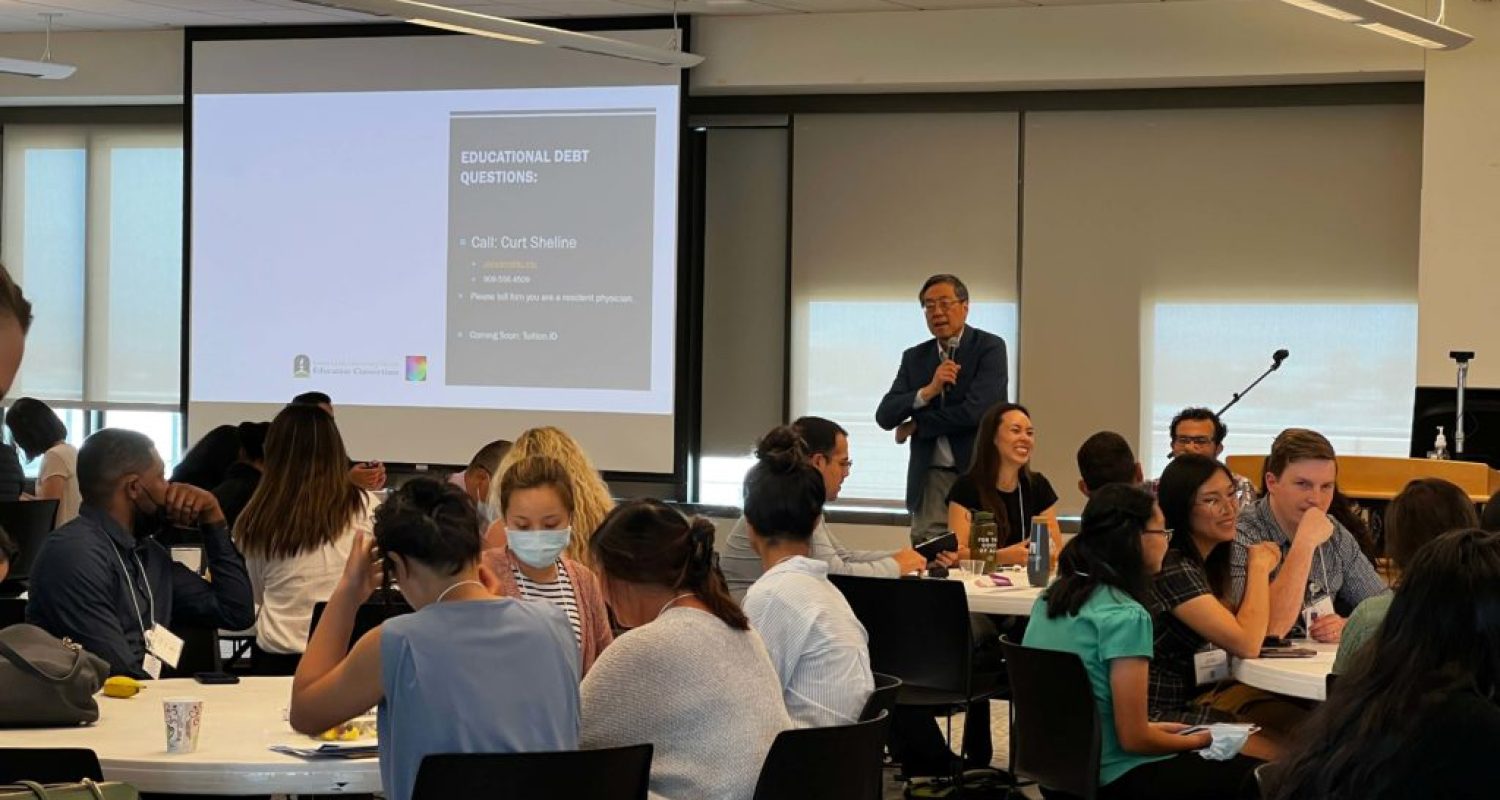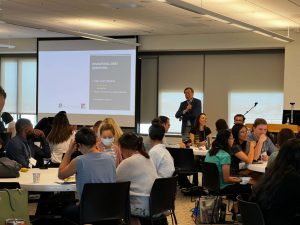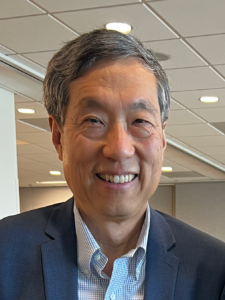Graduate Medical Education at LLUH

By Daniel W. Giang ’83, Vice President for Graduate Medical Education, LLUH
“Congratulations on graduation!” For most professionals, these words commemorate the end of formal education and a transition to careers in any number of disciplines. However, readers of the ALUMNI JOURNAL understand graduation from medical school merely marks a symbolic waypoint in the making of a physician. The remaining 40–70% of the journey occurs during internships, residencies, and fellowships, known as graduate medical education (GME).
HISTORY OF GME AT LLUH
Shortly after the first medical students arrived at the College of Medical Evangelists, American educator Abraham Flexner published a new paradigm, the “Flexner Report,” in 1910. The report aimed to make American medical education more scientific, structured, and standardized. Its harsh requirements closed two-thirds of the then-operating American medical schools. Coincidentally, around this time many Seventh-day Adventists expressed their desire to pursue the requirements needed to practice as legal physicians. To this, church co-founder Ellen White responded, “Whatever education our young people preparing to be physicians, [sic] require, that we must give.”¹ Thus, the College of Medical Evangelists developed its curriculum based on Flexner’s recommendations.
In keeping with the spirit of White’s assertion, GME was first offered at the Los Angeles campus. The institution’s first resident physician was John C. Roos ’44-A, a pathology resident from 1946–1949. The pathology residency program appears to have been the first to become accredited (1951). Our anesthesiology and general surgery residencies began in the 1950s. With the consolidation of medical education to the Loma Linda campus, several other residency programs started in 1965. Gordon W. Thompson ’48 directed Loma Linda University (LLU) GME from 1965–1990, followed by James J. Couperus ’67, associate dean for GME, from 1990–1995.
GME TODAY

As of 2019, a California medical license requires 36 months of accredited GME training after medical school and most hospitals and medical insurers require specialty board certification. We provide every graduate of LLU School of Medicine the opportunity to complete the required GME they need for licensure and practice.
Today, our GME programs cost $106 million annually for stipends, benefits, professional liability coverage, educational administration, and accreditation. After reimbursements from the government, affiliated hospitals, and numerous training grants, Loma Linda University Health (LLUH) invests $13 million in operating expenses for GME each year. In addition, our faculty members volunteer their time to provide lectures, mentoring, and evaluation of 912 residents and fellows in 65 accredited programs. (All of our GME programs have achieved full accreditation.) To support the volume and variety of GME programs we offer, LLUH partners with 90+ affiliate institutions to ensure our residents and fellows receive diverse clinical experiences. Our largest affiliate hospitals are Veteran’s Affairs Health System—Loma Linda and Riverside University Health System Medical Center. Ninety-eight percent of our PGY-1 positions are filled through matches, and the remaining vacant preliminary surgery positions are rapidly filled through the Supplemental Offer and Acceptance Process. We are proud to fill a large portion of our residency and fellowship positions with School of Medicine alumni—currently, 29% of our GME positions are filled with alumni. Additionally, we are pleased to welcome several international physicians to our programs, filling 11% of our positions.
Over the past decade, Richard H. Hart ’70, Kerry Heinrich, JD, and the other leaders of LLUH took steps to ensure the sustainability of GME while improving its quality. These efforts have allowed us to expand the number of physicians we train and the variety of programs we offer. Prior to 2014, all LLU GME programs were sponsored by Loma Linda University Medical Center (LLUMC). Like all academic medical centers, federal reimbursement for GME through Medicare was capped at 1996 levels. To sustain growth, the sponsorship of GME programs was transferred to a new community consortium, LLUH Education Consortium, jointly owned by LLUH and Social Action Community Health (SAC Health).
SAC Health is recognized as a Federally Qualified Health Center. By forming a GME consortium, SAC Health now receives Teaching Health Center (THC) grant funding for 45 additional resident physicians. Altogether, 400 LLUH residents and fellows and their full-time faculty supervisors provide primary and specialty care at SAC Health each year. They work in patient-centered medical home clinics alongside medical assistants, nurses, case managers, social workers, and dietitians. This setting efficiently meets the needs of our current neighbors while helping retain resident physicians to care for our region’s future. SAC Health is now the largest THC in the country. By obtaining these and other workforce development grants from the federal and state governments, LLUH has been able to expand its addiction medicine, emergency medicine, family medicine, internal medicine, internal medicine/pediatrics, obstetrics/gynecology, pediatrics, and psychiatry training programs.
Another change that affected the growth of our GME programs is the separate licensure of LLU Children’s Hospital in 2015. This led to expanded services and improved quality of care for both children and adults, and the change in structure significantly increased GME reimbursement from the federal government.
Even more recently, in 2021, LLUMC was recognized as a Rural Referral Center. This designation has allowed us to open new fellowships in administrative emergency medicine, interventional cardiology, clinical cardiac electrophysiology, advanced heart failure, infectious diseases, surgical critical care, and gynecologic oncology. We anticipate additional accredited fellowships in procedural dermatology, transplant hepatology, geriatric medicine, endocrinology, and sleep medicine.
RESIDENT WELLNESS
Residency has always been tough. In 2003, the Accreditation Council for Graduate Medical Education (ACGME) restricted the hours residents spend on duty: capped at 80 per week with no more than 24 consecutive hours on duty. To help keep track of these strictures, most of our residents use ResQ—a cellphone app that automatically tracks their hours when they enter and exit the hospital. You may recall the days of pagers—a young resident’s constant companion—and while pagers are still used (depending on the specialty), ResQ is yet another aspect of GME that looks very different now than it did 20 years ago. Capped hours and improved tracking are a start, however, the pace of care within hospitals has dramatically increased in recent years. Patients once cared for in the ICU are now ward patients. Most often patients aren’t admitted for a “diagnostic workup” or six weeks of antibiotics. Length of stay has significantly decreased, meaning residents help arrange home care as soon as the patient is admitted so the next patient can have a bed. Residents still face grueling schedules and a challenging work/life balance.
Our institution is in many ways defined by whole person care, and we believe this approach applies to our residents and fellows as well. In 2011, LLUH created the Physician Vitality Team. This group of therapists led by Barbara Hernandez, PhD, works to remind our physicians of the meaning inherent in our profession. They also provide residents the opportunity to safely debrief as their schedules allow, whether after a lecture, in a hallway, or over supper at home. Additionally, Melissa J. Pereau ’04 started a “concierge” psychiatry service aimed at residents in 2018. She and her colleagues now provide behavioral health care to 140 of our resident physicians. Beginning in 2019, Daniel R. Reichert ’88 and his colleagues in primary care began offering similar primary care appointments for residents and their families. One call arranges an appointment the resident can keep, even with their demanding schedule.
CONCLUSION
Is GME worth the effort and $106 million? I believe it is, and the proof can be found in the people. I am constantly inspired by our dedicated residents and fellows. For example, Ecler Jaque, MD, attended medical school in Brazil, matched in one of our first THC-supported family medicine positions, and after completing a geriatric medicine fellowship at UCLA, has returned to LLUH as an attending for our new geriatrics fellowship. She was just named the California Academy of Family Physicians Educator of the Year. Her story, along with countless others, show the value of investing in high-quality GME programs. We are proud to contribute toward the development of excellent physicians who daily exemplify our institution’s mission, and we are constantly inspired by their enthusiasm and drive to succeed.
Endnotes
- White, E.G., Loma Linda Messages, 489.3–489.4.
 Dr. Giang has served as vice president for graduate medical education at LLUH since 1996. He serves as the chair of the Graduate Medical Education Committee and is responsible for assuring compliance with ACGME Institutional Requirements for all of LLUH’s GME programs.
Dr. Giang has served as vice president for graduate medical education at LLUH since 1996. He serves as the chair of the Graduate Medical Education Committee and is responsible for assuring compliance with ACGME Institutional Requirements for all of LLUH’s GME programs.

